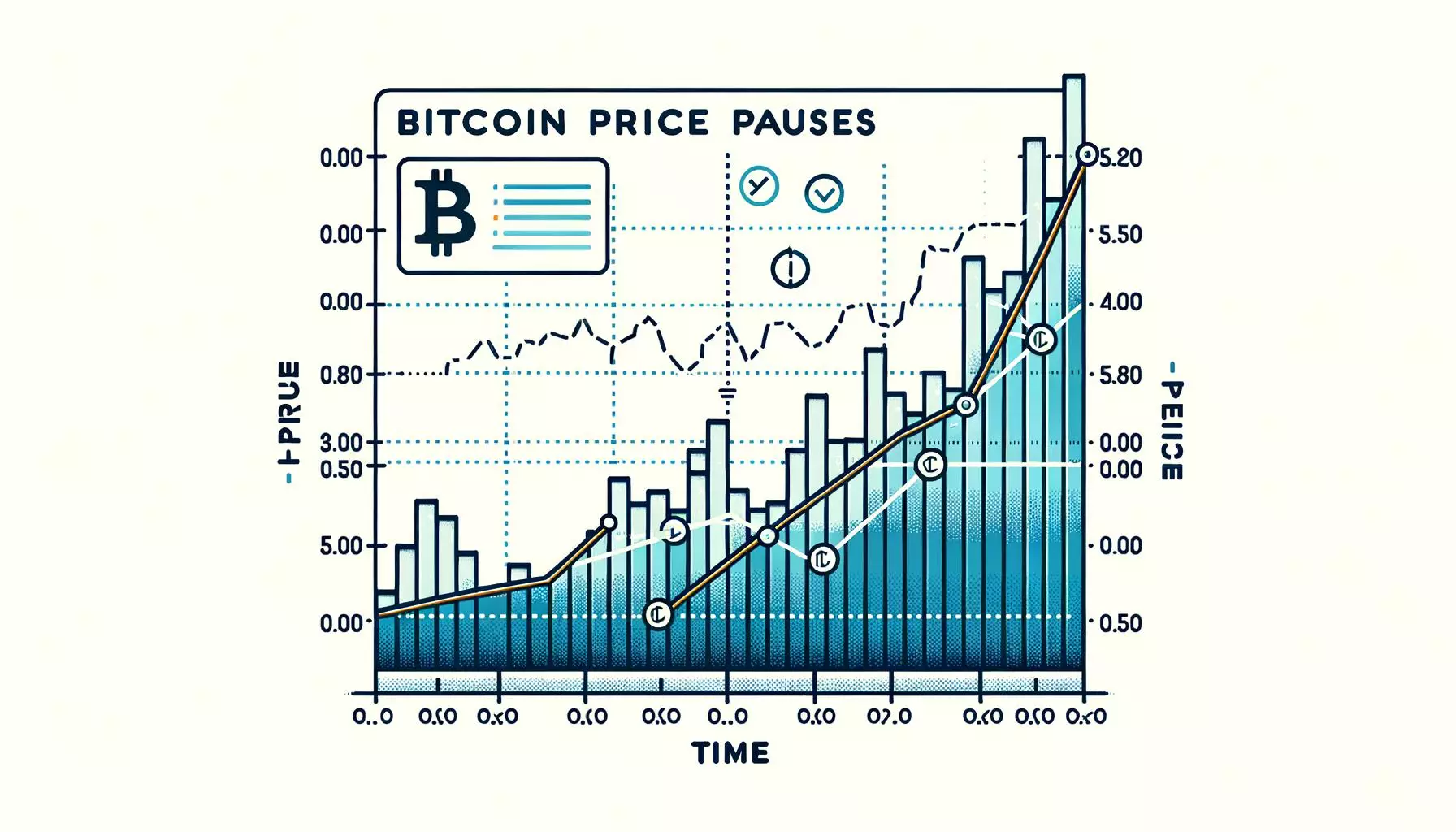The cryptocurrency market is known for its volatility and the unpredictable nature of asset prices. Currently, Bitcoin (BTC) is undergoing a period of consolidation after a significant attempts at upward momentum were met with resistance, particularly around the $70,000 mark. This analysis aims to dissect the recent movements in Bitcoin’s price, assess market sentiment, and explore potential future trends.
Bitcoin recently faced a notable challenge in its upward trajectory as it attempted to breach the critical $70,000 resistance zone. Instead of maintaining its bullish stance, the asset saw a downward correction, with its price retreating below key support levels. As of now, Bitcoin is trading beneath $67,500, a position that places it below the 100-hourly simple moving average, which is often a crucial indicator for traders.
This price movement suggests a loss of momentum in a market often characterized by rapid fluctuations. The Bitcoin price had previously approached a high of $69,427 but has since plummeted to test the $66,500 support level. This downward trend raises concerns among investors and traders alike, as each decline can indicate potential market corrections needed after peaks.
In the current market, Bitcoin is influenced by a variety of technical indicators that traders use to make informed decisions. Notably, the presence of a short-term contracting triangle forming at $67,100 indicates a potential inflection point. This triangular formation often signifies indecision in the market, where buying and selling pressures are nearly balanced.
The hourly Moving Average Convergence Divergence (MACD) reflects a weakening bearish momentum, suggesting the possibility of a trend reversal if buying pressure increases. Meanwhile, the Relative Strength Index (RSI) reading below 50 further emphasizes the bearish sentiment circulating in the market, implying that momentum is currently not in Bitcoin’s favor.
An examination of Bitcoin’s price reveals crucial support and resistance levels that traders are monitoring closely. The $66,800 level serves as the immediate support, with a significant backing at the $66,500 mark. If these levels fail to hold, Bitcoin could potentially see a grim drop toward the next support zone at $66,200, with further losses possibly pushing it down to $65,500. Such a downturn could instill a greater bearish outlook among investors.
Conversely, the immediate upper resistance is now identified around the $67,100 level, followed closely by the pivotal $68,000. To foresee an uptick in Bitcoin’s price, it is essential for the coin to close above these resistance levels. A confirmed breakout over $68,000 could propel Bitcoin toward higher targets, with the $69,200 resistance level in sight, and potentially challenge the psychological barrier at $70,000 once again.
As traders and investors navigate this complex landscape, it’s clear that Bitcoin is at a crucial juncture. The oscillation between support and resistance levels underlines the importance of monitoring ongoing market movements and the potential for either a recovery above the key resistance levels or a deeper correction if bearish momentum prevails.
The landscape of cryptocurrency remains as exciting as it is unpredictable, and understanding the intricacies of technical indicators, support, and resistance levels will remain vital for those involved in Bitcoin trading. As the market continues to evolve, staying informed and preparing for swift changes will be essential for success in this dynamic environment. Ultimately, the future of Bitcoin will depend on how it manages these technical challenges and the broader sentiment of the crypto market as a whole.















